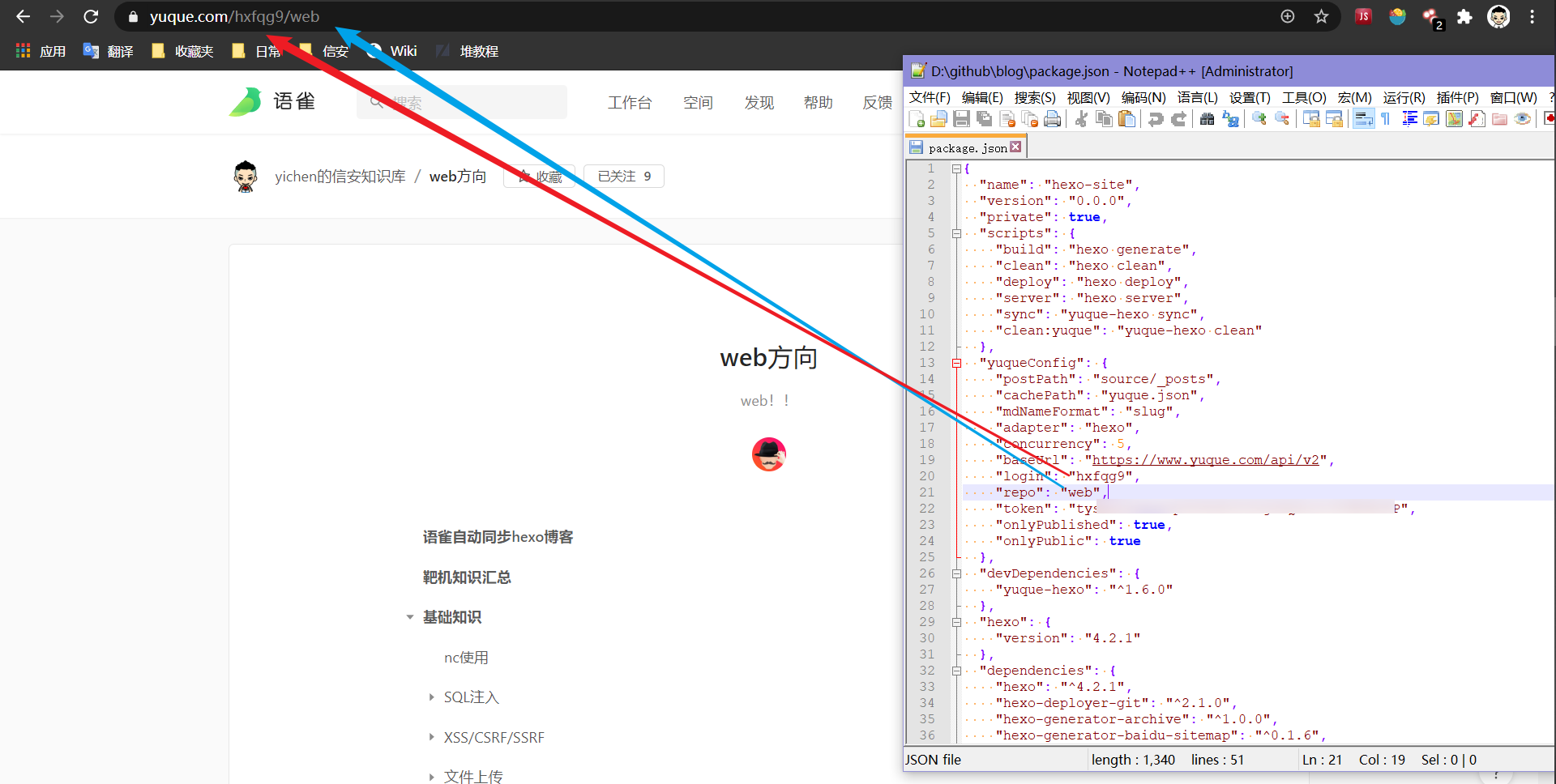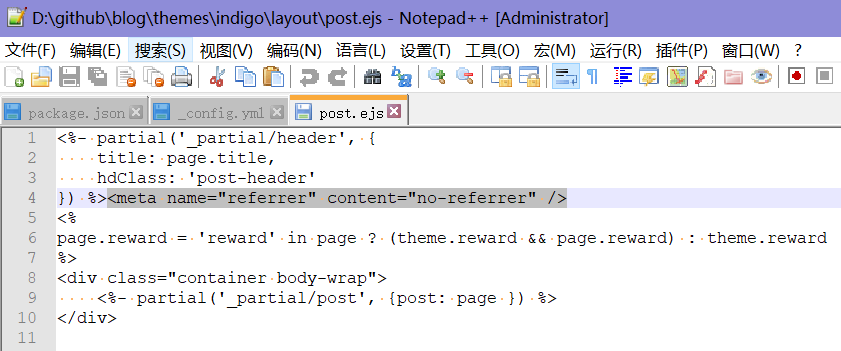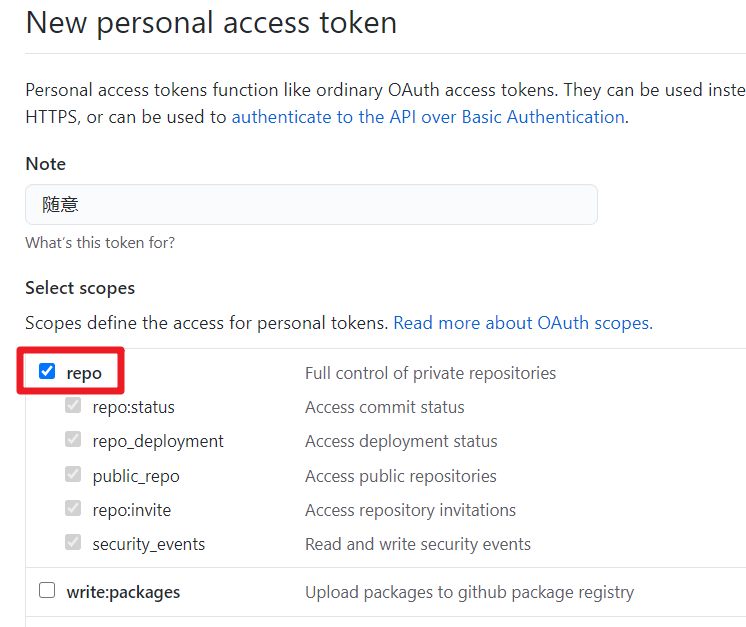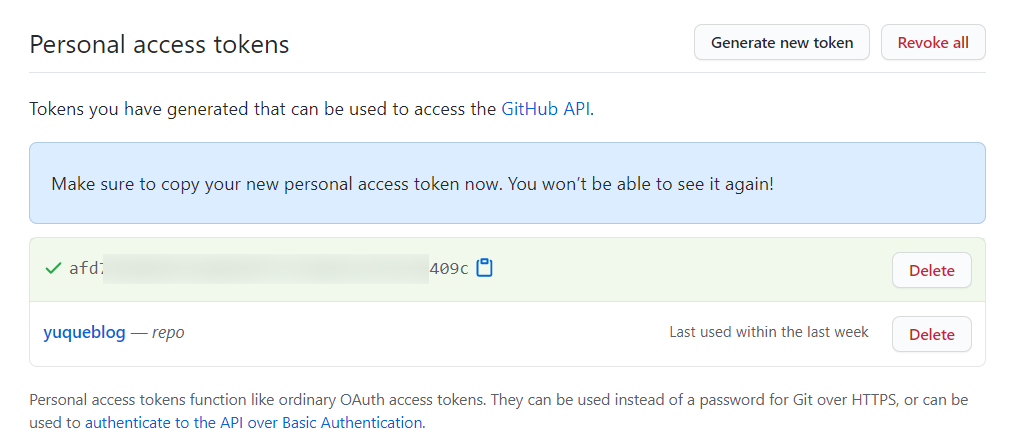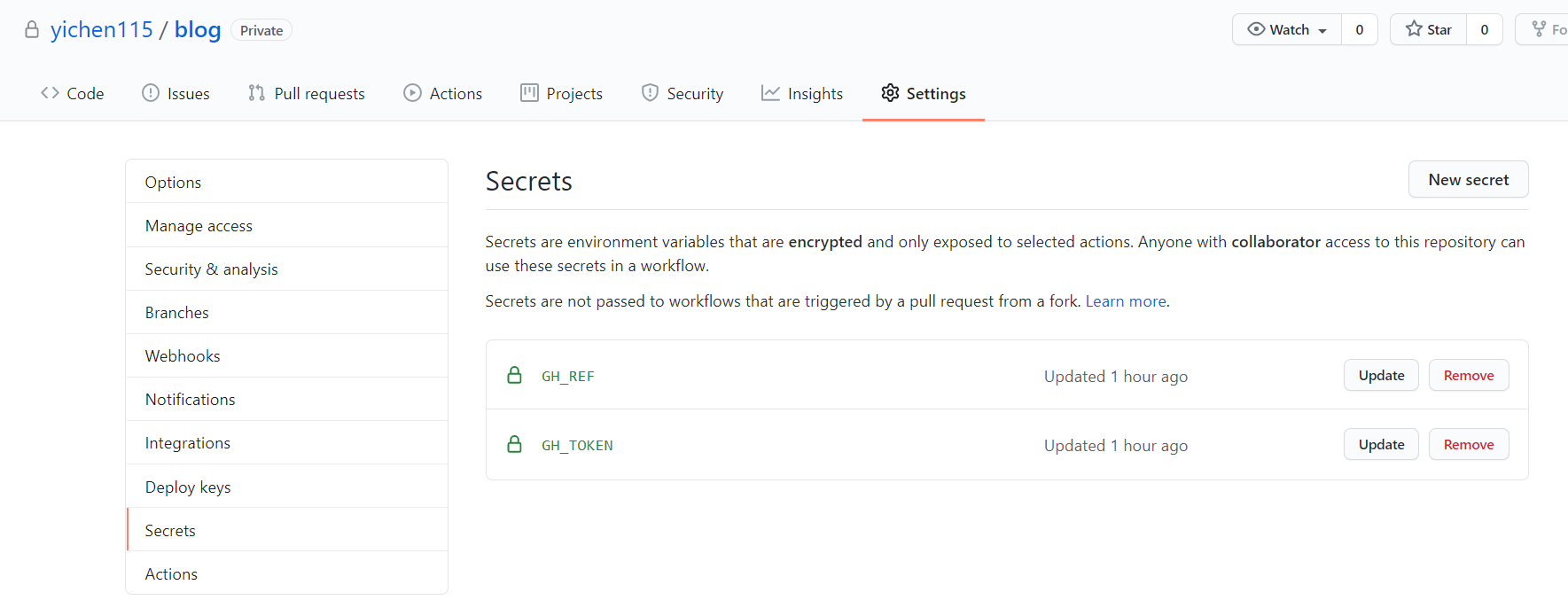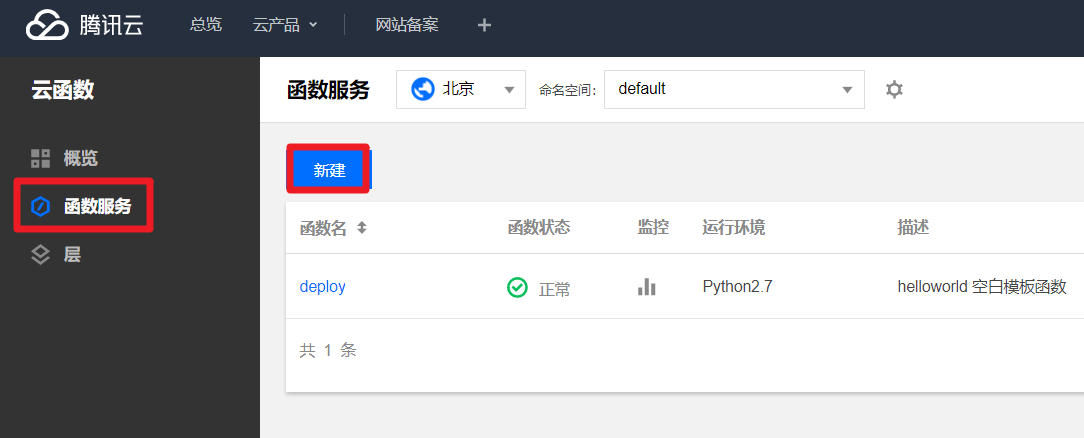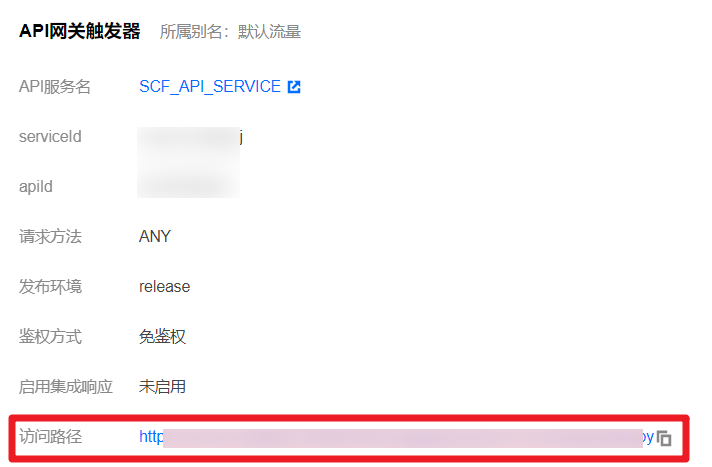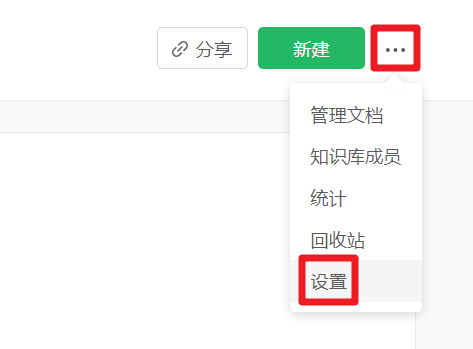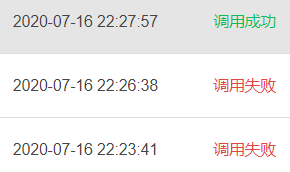hexo+github pages+yuque-hexo 插件+github actions+serverless 云函数+语雀
实现语雀写完文章能够自动同步到 hexo 博客
本文针对已经搭建好 hexo 博客的,如果没有搭好正常的 hexo 博客的可以去网上找一下,很方便
hexo 同步语雀内容
用到了这个项目:https://github.com/x-cold/yuque-hexo
安装:npm i -g yuque-hexo
然后把 package.json 的内容添加上下面这些
1
2
3
4
5
6
7
8
9
10
11
12
13
14
15
16
17
18
19
| "yuqueConfig": {
"postPath": "source/_posts",
"cachePath": "yuque.json",
"mdNameFormat": "slug",
"adapter": "hexo",
"concurrency": 5,
"baseUrl": "https://www.yuque.com/api/v2",
"login": "hxfqg9",
"repo": "web",
"token": "语雀token",
"onlyPublished": true,
"onlyPublic": true
},
"devDependencies": {
"yuque-hexo": "^1.6.0"
},
"hexo": {
"version": "4.2.1"
},
|
这里说一下里面的 baseurl 是固定的
login 和 repo 是如下图这样对应的,个人界面和团队界面都可以
image.png
token 是在右上角头像 -> 账户设置 -> Token 添加的,权限的话只给读取就可以
ps.公开的知识库也要设置 Token
image.png
在 “scripts” 中添加
1
2
| "sync": "yuque-hexo sync",
"clean:yuque": "yuque-hexo clean",
|
这样整体下来我的 package.json 内容如下
1
2
3
4
5
6
7
8
9
10
11
12
13
14
15
16
17
18
19
20
21
22
23
24
25
26
27
28
29
30
31
32
33
34
35
36
37
38
39
40
41
42
43
44
45
46
47
48
49
50
| {
"name": "hexo-site",
"version": "0.0.0",
"private": true,
"scripts": {
"build": "hexo generate",
"clean": "hexo clean",
"deploy": "hexo deploy",
"server": "hexo server",
"sync": "yuque-hexo sync",
"clean:yuque": "yuque-hexo clean"
},
"yuqueConfig": {
"postPath": "source/_posts",
"cachePath": "yuque.json",
"mdNameFormat": "slug",
"adapter": "hexo",
"concurrency": 5,
"baseUrl": "https://www.yuque.com/api/v2",
"login": "hxfqg9",
"repo": "web",
"token": "语雀token",
"onlyPublished": true,
"onlyPublic": true
},
"devDependencies": {
"yuque-hexo": "^1.6.0"
},
"hexo": {
"version": "4.2.1"
},
"dependencies": {
"hexo": "^4.2.1",
"hexo-deployer-git": "^2.1.0",
"hexo-generator-archive": "^1.0.0",
"hexo-generator-baidu-sitemap": "^0.1.6",
"hexo-generator-category": "^1.0.0",
"hexo-generator-feed": "^2.2.0",
"hexo-generator-index": "^1.0.0",
"hexo-generator-json-content": "^4.2.3",
"hexo-generator-searchdb": "^1.3.1",
"hexo-generator-sitemap": "^2.0.0",
"hexo-generator-tag": "^1.0.0",
"hexo-renderer-ejs": "^1.0.0",
"hexo-renderer-marked": "^2.0.0",
"hexo-renderer-stylus": "^1.1.0",
"hexo-server": "^1.0.0",
"hexo-wordcount": "^6.0.1"
}
}
|
这时候用 yuque-hexo sync 就会把语雀的文章给下载下来,下载到 \source_posts
然后 hexo g && hexo s 就可以访问 127.0.0.1:4000 本地看一下了
手动发布是 hexo g && hexo d
针对语雀图片无法正常显示的解决办法
在主题的 layout 文件夹中的 post.ejs 文件中加上一句
1
| <meta name="referrer" content="no-referrer" />
|
image.png
github actions 自动更新
在 github 上创建一个私有仓库(因为会涉及到一些 token 啥的)仓库名字无所谓
注意:在仓库里面再放一个仓库是没法把里面那个仓库 push 到 github 的,只会传一个空文件夹,导致后期博客成了空白页面,最简单粗暴的办法就是把你 git clone 的 hexo 主题里的 .git 文件夹给删掉
然后在 hexo 的目录下运行如下命令
1
2
3
4
5
| git init
git add .
git commit -m "first commit"
git remote add origin https://github.com/yichen115/blog.git
git push -u origin master
|
去 github 的 settings 创建一个 token
image.png
只勾上这一个即可
image.png
image.png
生成了 token 之后一定要记下来,再回来就没法看了
然后来到刚才创建的私有仓库的 settings
image.png
添加两个 secret
GH_REF 是你博客的仓库地址 github.com/yichen115/yichen115.github.io
注意去掉前面 https://
GE_TOKEN 是刚才生成的 token
然后来到 actions,点击 set up a workflow yourself
image.png
编辑内容如下:
1
2
3
4
5
6
7
8
9
10
11
12
13
14
15
16
17
18
19
20
21
22
23
24
25
26
27
28
29
30
31
32
33
34
35
36
37
38
39
40
41
42
43
| name: Blog CI/CD
on: [push, repository_dispatch]
jobs:
blog-cicd:
name: Hexo blog build & deploy
runs-on: ubuntu-latest
env:
TZ: Asia/Shanghai
steps:
- name: Checkout codes
uses: actions/checkout@v2
- name: Setup node
uses: actions/setup-node@v1
with:
node-version: "12.x"
- name: Cache node modules
uses: actions/cache@v1
with:
path: ~/.npm
key: ${{ runner.os }}-node-${{ hashFiles('**/package-lock.json') }}
- name: Install dependencies
run: |
npm install hexo-cli -g
npm install yuque-hexo -g
npm install
yuque-hexo sync
- name: Generate files
run: hexo generate
- name: Deploy blog
run: |
git clone "https://${{ secrets.GH_REF }}" deploy_git
mv ./deploy_git/.git ./public/
cd ./public
git config user.name "yichen"
git config user.email "1097179511@qq.com"
git add .
git commit -m "GitHub Actions Auto Builder at $(date +'%Y-%m-%d %H:%M:%S')"
git push --force --quiet "https://${{ secrets.GH_TOKEN }}@${{ secrets.GH_REF }}" master:master
|
下面那个 user.name 和 user.email 根据自己的情况改一下,注意对齐
弄完之后每当 push 或 repository_dispatch 的时候都会自动的进行更新
配置 serverless 云函数
来这里 https://console.cloud.tencent.com/scf/ 注册个账号
新建一个函数服务
image.png
image.png
内容写
1
2
3
4
5
6
7
8
9
10
11
12
13
14
|
import requests
def main_handler(event, context):
r = requests.post("https://api.github.com/repos/yichen115/blog/dispatches",
json = {"event_type": "run-it"},
headers = {"User-Agent":'curl/7.52.1',
'Content-Type': 'application/json',
'Accept': 'application/vnd.github.everest-preview+json',
'Authorization': 'token 你的GH_TOKEN'})
if r.status_code == 204:
return "This's OK!"
else:
return r.status_code
|
post 请求里只需要改用户名和仓库名(yichen115/blog)后面是固定的
那个 token 是带着的,完整的就是 ‘Authorization’: ‘token xxxxxxxxxxxxxx’
点下面那个测试,返回 This’s OK!
image.png
同时 github actions 也会收到指令,去执行之前在 main.yml 设定好的
image.png
过一阵就成下面那个绿色的对号了,然后去访问一下博客,看看是否正常。可以的话就证明云函数可以了
创建一个触发器
image.png
image.png
他会给你一个访问路径,记下来
image.png
配置语雀 webhook
在知识库中选择设置
image.png
触发规则自己定就好啦
image.png
*
这篇文章更新的时候发现有失败的可能
**
image.png
*\
我的博客地址:https://yichen115.github.io
最后更新时间:
